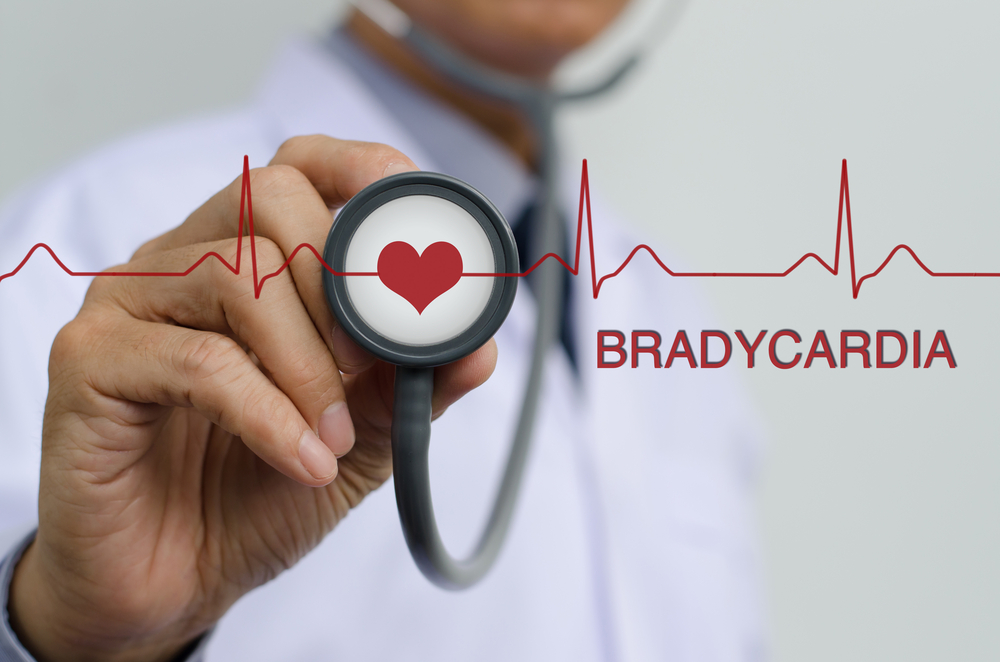Mark Kopec Now
Bradycardia
Bradycardia: Understanding the Condition and the Medical Malpractice Risks
Bradycardia is a condition defined by an abnormally slow heart rate. (In contrast, tachycardia is an abnormally fast heart rate). It can range from a benign sign of physical fitness to a serious medical emergency. Bradycardia can arise or be mismanaged due to medical malpractice. It can then form the basis of a medical malpractice claim. The Kopec Law Firm provides this article to give a comprehensive overview of bradycardia. It also examines the circumstances under which medical malpractice can both cause and result from inadequate responses to the condition.
What is Bradycardia?
Bradycardia is a type of cardiac arrhythmia, or abnormal heart rhythm, characterized by a resting heart rate that is significantly slower than normal. For most adults, a normal resting heart rate falls between 60 and 100 beats per minute (bpm). Bradycardia is typically defined as a heart rate of less than 60 bpm, though some definitions use a threshold of 50 bpm for symptomatic bradycardia.
The heart’s rhythm is controlled by an electrical system. The process begins in the sinus (or sinoatrial) node. This is the heart’s natural pacemaker. It generates the electrical impulse for each heartbeat. This impulse travels through the atria (upper chambers) to the atrioventricular (AV) node, and then down to the ventricles (lower chambers). Bradycardia occurs when the sinus node malfunctions, the electrical signals are slowed, or the pathway is blocked (known as heart block), causing the heart to beat too slowly to effectively pump oxygen-rich blood to the body.

Causes and Risk Factors
Bradycardia can be caused by a variety of intrinsic and extrinsic factors.
Causes of Bradycardia:
- Damage to Heart Tissue: This is often the result of heart disease, a heart attack (myocardial infarction), or as a bad outcome of heart surgery.
- Malfunction of the Sinus Node (Sick Sinus Syndrome): The heart’s natural pacemaker does not fire impulses correctly, leading to slow or irregular rhythms, often alternating with fast rhythms (tachycardia-bradycardia syndrome).
- Heart Block (AV Block): A blockage or slowing of the electrical signal’s passage from the atria to the ventricles.
- Medications: Many prescription drugs can slow the heart rate, including certain heart medications (like beta-blockers, calcium channel blockers, and antiarrhythmics), chemotherapy drugs, and opioids.
- Underlying Medical Conditions:
- Hypothyroidism (underactive thyroid gland)
- Electrolyte imbalances (e.g., high potassium)
- Infections affecting the heart muscle (myocarditis), such as Lyme disease or rheumatic fever.
- Obstructive sleep apnea.
- Congenital heart defects (present at birth).
Risk Factors:
- Advanced Age: Bradycardia is most common in older individuals, as heart tissue and the electrical system naturally degenerate with age.
- Pre-existing Heart Conditions: High blood pressure, high cholesterol, and a history of heart attack or heart disease.
- Lifestyle Factors: Smoking, heavy alcohol use, and recreational drug use.
Symptoms of Bradycardia
While some individuals, particularly highly conditioned athletes, can have asymptomatic bradycardia, a heart rate that is too slow for the body’s needs can lead to symptoms as organs, especially the brain, do not receive enough oxygenated blood.
Common symptoms include:
- Dizziness or lightheadedness
- Fainting (syncope) or near-fainting spells
- Fatigue or weakness, particularly during physical activity (exercise intolerance)
- Shortness of breath
- Chest pain (angina)
- Confusion or memory problems
If a doctor failed to respond to your symptoms of bradycardia, the Kopec Law Firm will assess your potential medical malpractice claim.
Diagnosis and Treatment
Type of Medical Doctors to See: A primary care physician may do the initial assessment. For diagnosis and definitive treatment, a patient will typically be referred to a Cardiologist, specifically an Electrophysiologist (EP). An electrophysiologist is a cardiologist with specialized training in the heart’s electrical system and the diagnosis and treatment of heart rhythm disorders (arrhythmias).
Diagnostic Tests
- Electrocardiogram (ECG or EKG): A standard test that records the heart’s electrical activity. However, if bradycardia is intermittent, a single ECG may be normal.
- Ambulatory Monitoring: Devices worn by the patient over a period of time to capture irregular rhythms that do not occur during a brief office visit. Examples include:
- Holter monitor: Records the heart’s activity for 24 to 48 hours.
- Event monitor/Mobile Cardiac Telemetry: Worn for a longer period and records only when the patient activates it or when an abnormal rhythm is detected automatically.
- Echocardiogram: An ultrasound of the heart to check for structural problems.
- Blood Tests: To check for underlying causes like hypothyroidism or electrolyte imbalances.
- Exercise Stress Test: To determine if the heart rate slows too much during or after physical exertion.
Treatments for Bradycardia
Treatment depends heavily on the underlying cause and the severity of symptoms.
- Treating Underlying Causes: If bradycardia is caused by medication, the doctor may adjust the dosage or change the prescription. If caused by hypothyroidism or an electrolyte imbalance, treating those conditions can resolve the bradycardia.
- Medications: In acute, symptomatic bradycardia, intravenous medications like atropine may be used to temporarily speed up the heart rate.
- Pacemaker Implantation: For persistent, symptomatic bradycardia not caused by a reversible factor (e.g., sick sinus syndrome or high-degree heart block), the definitive treatment is often the implantation of a permanent electronic pacemaker. The doctor implants this small device is under the skin near the collarbone and it sends electrical impulses to regulate the heart rate.
Potential Damage and Complications
Untreated or severe bradycardia can significantly limit a person’s quality of life and lead to life-threatening complications due to insufficient blood flow to the brain and other vital organs:
- Frequent Fainting (Syncope): Poses a high risk of injury from falls (head trauma, fractures).
- Heart Failure: Over time, the heart’s reduced pumping efficiency can lead to the buildup of fluid in the lungs and body.
- Low Blood Pressure (Hypotension)
- Sudden Cardiac Arrest or Sudden Cardiac Death: In extreme, untreated cases.
- Brain Damage: Particularly a risk in cases of prolonged fetal bradycardia during labor and delivery. It can lead to conditions like HIE (Hypoxic Ischemic Encephalopathy) and cerebral palsy.
Bradycardia and Medical Malpractice
Medical malpractice occurs when a healthcare professional deviates from the accepted “standard of care” in their field, resulting in patient harm. Bradycardia is relevant to malpractice in two primary ways. When negligence causes the condition, or when negligence involves the response to the condition.
How Medical Malpractice Can Cause Bradycardia
In some situations, a patient’s bradycardia can be directly or indirectly caused by a healthcare provider’s negligent action.
- Medication Errors (Iatrogenic cause): A common scenario involves medication management. Negligence can occur through:
- Overdosing: Prescribing an excessively high dose of heart-rate-lowering medications (like beta-blockers or calcium channel blockers).
- Drug Interactions: Failing to properly review a patient’s chart and prescribe a new medication that, when combined with existing drugs, dangerously slows the heart.
- Failure to Monitor: Prescribing a medication known to cause bradycardia without getting follow-up tests (like an ECG) or monitoring the patient’s heart rate as the standard of care requires.
- Surgical Error:
- Cardiac Surgery Complications: During heart surgery (e.g., valve repair or replacement), accidental damage to the heart’s electrical conduction system (sinus node or AV node) can permanently induce bradycardia, requiring a pacemaker. If the damage resulted from a clear deviation from proper surgical technique, it could be grounds for a claim.
- Anesthesiologist Errors:
- Fetal Bradycardia during Birth: In obstetrics, the improper administration of drugs like epidural anesthesia or labor-inducing agents (e.g., Pitocin) can sometimes lead to maternal hypotension, which in turn causes fetal distress, severe bradycardia, and birth injury.
Medical Malpractice in Responding to Bradycardia
The majority of bradycardia-related medical malpractice cases stem from a healthcare professional’s failure to adequately recognize, diagnose, or treat a patient’s bradycardia. This leads to preventable complications.
- Failure to Diagnose, Misdiagnosis and Delay in Treatment:
- Ignoring Symptoms: A doctor fails to order appropriate diagnostic tests despite a patient complaining of classic bradycardia symptoms like syncope, dizziness, or profound fatigue.
- Misinterpreting Diagnostics: A cardiologist or emergency room doctor misreads an ECG or Holter monitor, overlooking significant sinus pauses or a high-degree heart block, thereby delaying the necessary intervention, such as a pacemaker. This is a clear deviation from the standard of care.
- Inadequate Monitoring and Intervention (Fetal Bradycardia):
- Obstetrical Negligence: In a labor and delivery setting, continuous fetal heart monitoring is standard. Malpractice can occur if:
- Nurses or OB/GYN doctors fail to recognize a pattern of severe or prolonged fetal bradycardia on the monitor.
- There is an unreasonable delay in initiating an emergency intervention, such as an emergency Caesarean section, when fetal distress indicated by bradycardia persists. Prolonged, uncorrected fetal bradycardia can lead to catastrophic birth injuries due to oxygen deprivation.
- Obstetrical Negligence: In a labor and delivery setting, continuous fetal heart monitoring is standard. Malpractice can occur if:
- Failure to Respond in an Emergency Setting:
- Hospital Malpractice: In a hospital or emergency room setting, a patient presenting with symptomatic bradycardia that results in hemodynamic instability (low blood pressure, altered mental status) requires immediate, life-saving measures (e.g., temporary pacing, administration of emergency cardiac drugs). A failure by emergency staff to promptly initiate these standard Advanced Cardiac Life Support (ACLS) protocols can constitute malpractice if the patient suffers permanent injury or wrongful death as a result.
Summary of Bradycardia & Medical Malpractice
In summary, a medical malpractice claim regarding bradycardia relies on proving that the healthcare provider’s action or inaction fell below the accepted standard of care and was the direct cause of the patient’s subsequent injury or adverse outcome. If you have been injured with bradycardia, see below to contact the Kopec Law Firm today.
You can read other medical malpractice articles here: Articles.
Visit our free consultation page or video. Then contact the Kopec Law Firm at 800-604-0704 to speak directly with Attorney Mark Kopec. He is a top-rated Baltimore medical malpractice lawyer. The Kopec Law Firm is in Baltimore and pursues cases throughout Maryland and Washington, D.C.





